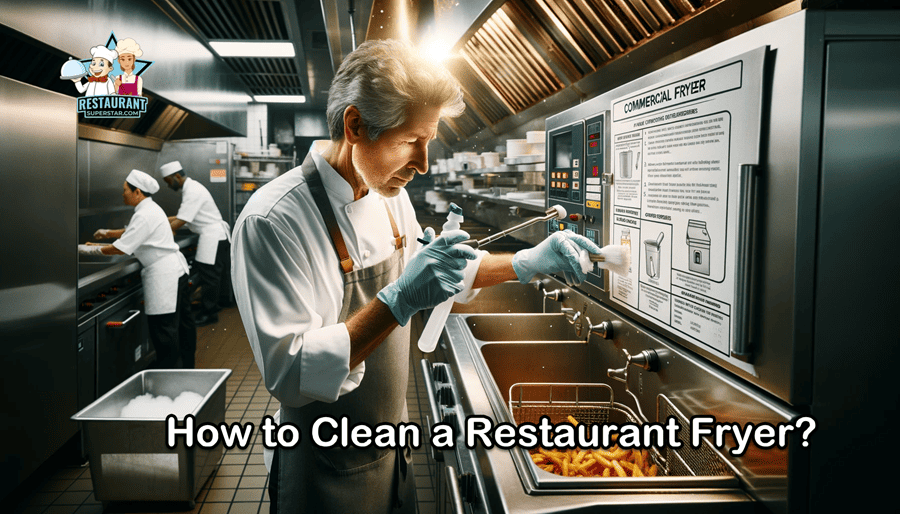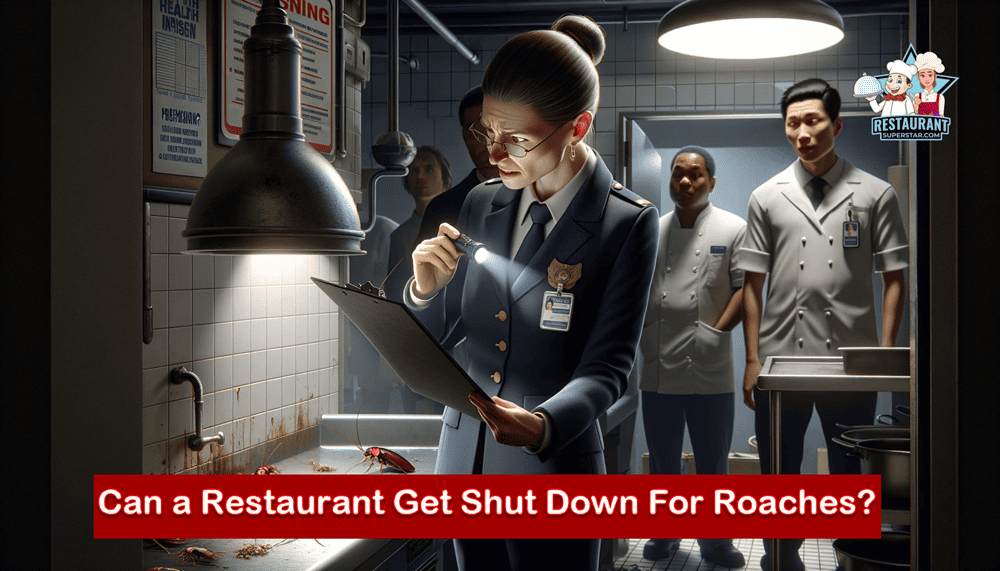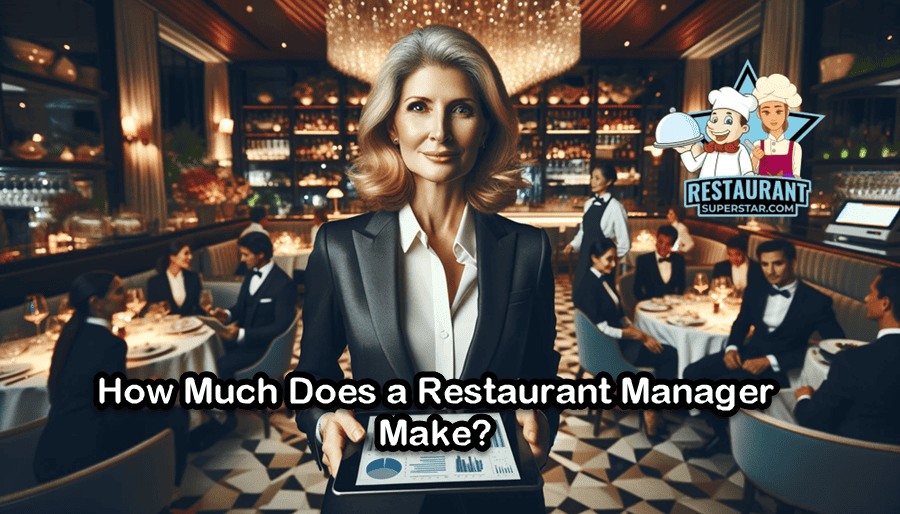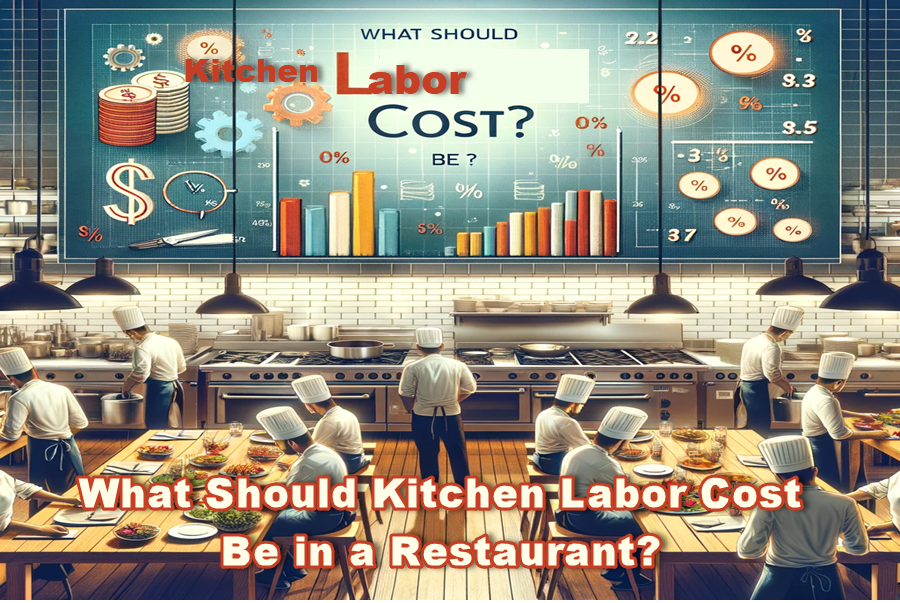What Temperature Should a Restaurant Kitchen Be?
You’re in the right place if you’re wondering, “What temperature should a restaurant kitchen be?” This article will dive deep into this question, shedding light on crucial insights every restaurant owner, kitchen manager, chef, and staff member should know.
With safety, efficiency, and comfort at the forefront, understanding the right temperature for your kitchen can make all the difference.
But while we’re about to give you a quick answer, stick around. This topic gets a lot juicier as we delve deeper.
What Temperature Should a Restaurant Kitchen Be?
What Temperature Should a Restaurant Kitchen Be? The temperature range for cooked food is 140°F or above, while the staff’s comfort zone is typically between 68°F and 76°F. It is important to acknowledge that the specific temperature can fluctuate based on factors such as the nature of the food, the size of the kitchen, and the geographical location.
Now that you’ve got a glimpse of the answer, it gets a lot more interesting from here. In this article, we will cover everything you need to know about ensuring the right temperature for your restaurant kitchen.
Dive in with us as we explore tips, tricks, and best practices to keep your kitchen environment both safe and pleasant.
Stay tuned because this isn’t just about numbers – it’s about creating the best culinary experience for both your team and your customers.
1 – The Essentials of Kitchen Temperature: A Deep Dive
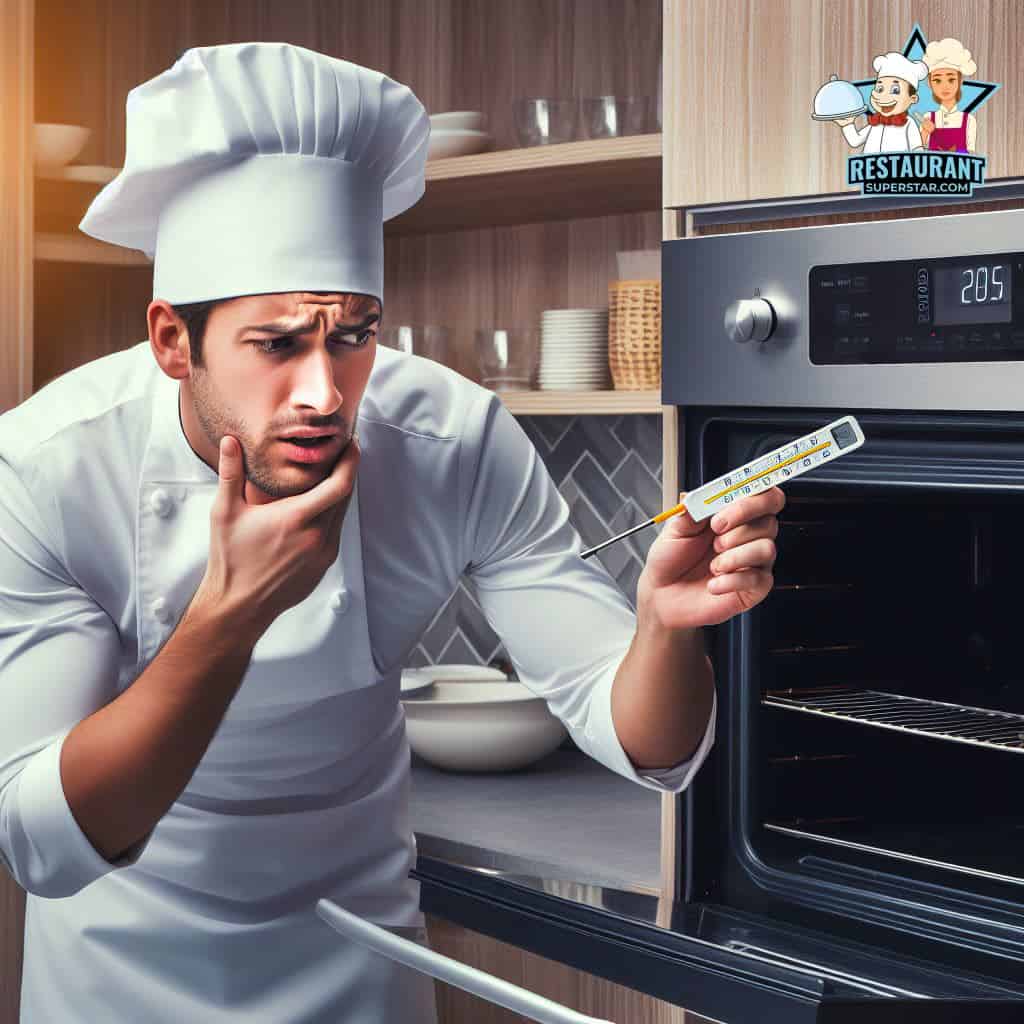
Alright, let’s dive into the nitty-gritty of it all. When running a restaurant, especially here in Florida, where the sun can turn up the heat, understanding the essentials of kitchen temperature is crucial.
1.1 Food Safety Standards: The Backbone of Our Business
I’ve seen many restaurants come and go. One thing that stands out among the successful ones is their unwavering commitment to food safety. Let’s break down some of the basics:
- Guidelines from the Experts: The Food Safety and Inspection Service (FSIS) has laid out some clear guidelines for us. If you need to become more familiar with them, it’s high time you get acquainted. These folks know their stuff, and their guidelines ensure we serve safe and delicious food every time.
- Cooked to Perfection: So, diving right in, when we talk about cooked food, the safe minimum internal temperature we’re aiming for is 140°F or above. I can’t stress this enough – it’s not just about getting that perfect sear on your steak; it’s about ensuring that whatever’s on the inside is cooked and safe to eat. Remember, it’s a balance between deliciousness and safety.
- Keeping It Cool: On the flip side, for our cold dishes, we’re looking at a sweet spot of 40°F or below. This isn’t just for those refreshing salads or sushi rolls. Think about creamy desserts, cold beverages, and even some marinated dishes. Keeping them at this temperature ensures they remain fresh, crisp, and safe for consumption.
In my years of consulting, I’ve often told restaurant owners and chefs that understanding these temperatures isn’t just about compliance – it’s about pride in what we serve.
We owe it to our customers and ourselves to uphold these standards. It’s the foundation of a successful kitchen.
1.2 Occupational Comfort and Safety
Now, let’s switch gears for a moment. While prioritizing food safety is crucial, there’s another aspect of temperature management that holds equal significance.
This is especially true for someone like me, who has spent numerous hours toiling away in kitchens throughout Florida. I’m referring to the well-being and security of our dedicated kitchen team.
- OSHA: For those who might not be in the know, the Occupational Safety and Health Administration, or as we often call it, OSHA, is the big player when it comes to setting workplace safety standards. Now, while they don’t have a hard and fast rule about the exact temperature a kitchen should be, they have some recommendations that make a lot of sense.
- The Comfort Zone: OSHA suggests that employers aim to maintain a temperature range between 68°F and 76°F in the workplace. Now, I know what some of you might think – “Jeff, it’s a kitchen; it’s bound to get hot!” And you’re right. But here’s the thing: while the occasional flare-up from a grill or the heat from an oven is inevitable, the overall environment should be comfortable. Think about it. A comfortable chef is a focused chef. A focused chef dishes out masterpieces. It’s a win-win.
From my experience, ensuring the kitchen crew is comfortable is more than just about adhering to recommendations. It’s about respect.
It’s about acknowledging the hard work they put in, day in and day out. And trust me, a little comfort goes a long way in building loyalty and ensuring your restaurant thrives.
2. Factors Influencing Kitchen Temperature: It’s Not One-Size-Fits-All

Okay, pals, let’s talk about some of the variables that play into the “what temperature should a restaurant kitchen be” equation.
Trust me, from the panhandle to the keys, I’ve seen all kinds of kitchens, and they’re as diverse as the Sunshine State itself!
2.1 The Dish Dictates the Heat: Type of Food Being Cooked
The food you’re preparing has a significant impact on the temperature of your kitchen. Allow me to explain:
- Feeling the Burn with Open Flames: Kitchens that are all about those grills, charbroilers, and open flames? Yeah, they’re bound to run a bit hotter. I’ve been in places where the steak sizzles and the flames dance – it’s a sight to behold. But with all that fire and flair comes extra heat. It’s not just about the food getting cooked; the entire kitchen feels the warmth. You’ve got radiant heat from the flames, the warmth from the cooked food, and the bustling energy of chefs moving about. It’s a dynamic environment.
- Cool and Collected with Cold Preparations: On the other end of the spectrum, we have kitchens specializing in cold dishes. Think sushi bars, salad stations, and even some dessert parlors. These places are generally cooler because they’re devoid of roaring flames and because of all the refrigeration units running to keep ingredients fresh. It’s a calmer, chillier atmosphere and a whole different ballgame.
So, to all my fellow Floridian restaurant folks, understanding the kind of food you’re serving is pivotal. It does not only dictate the tools you need but also the environment you’ll be working in.
And remember, whether you’re firing up the grill or rolling a sushi roll, ensuring the right temperature is vital to a successful kitchen.
2.2 Size Matters: The Role of Kitchen Dimensions in Temperature
Now, let’s chat about another factor that I’ve seen play a significant role in kitchen temperatures: the size of the kitchen itself.
Trust me, from cozy diners in Destin to grand dining halls in Miami, the size of the kitchen can have a tangible impact on how hot or cold it gets.
- The Expansive Landscape of Larger Kitchens: With sprawling countertops and multiple cooking stations, bigger kitchens often have a more complex temperature dynamic. On one hand, there’s more space for heat to dissipate, which can help keep things cooler. But on the flip side, these vast spaces often house more equipment – multiple ovens, grills, fryers, you name it. And more equipment usually means more heat sources. Plus, with a larger crew bustling about, coordinating like a well-oiled machine, the human activity can add to the warmth.
- The Cozy Confines of Smaller Kitchens: You’ve got the smaller kitchens. These compact spaces have their own set of challenges. With limited space, heat has few places to go, which can cause the temperature to rise quickly, especially during a busy service. However, the upside is that they often have fewer heat-generating appliances, which can somewhat balance things out. But, and this is crucial, proper ventilation becomes even more vital in these snug settings. Without it, things can get stuffy real quick.
Over my years in the biz, I’ve advised many restaurant owners on optimizing their kitchen spaces.
Whether you’re working with a roomy kitchen or a more intimate one, knowing its size and its temperature nuances is crucial.
It helps in planning, equipment placement, and, most importantly, ensuring food safety and staff comfort. After all, a comfortable kitchen is productive, no matter its size.
2.3 Climate Considerations: When Mother Nature Joins the Kitchen Crew
Let’s talk about something we know all too well: the climate. Yep, our external environment plays a significant role in our kitchen’s temperature, whether it’s those scorching summer days or the milder winter breezes.
And trust me, as someone who’s consulted for restaurants from the humid coasts to the slightly cooler inland areas, I’ve seen it all.
- Sizzling Summers and Kitchen Heat: Let’s start with the obvious. The external heat can enter the kitchen in hotter climates, especially during our notorious Florida summers. Even with the best air-conditioning systems, a busy kitchen with ovens and stoves running can feel the heat. The challenge here is to ensure that the internal cooling systems are robust enough to counteract both the external heat and the heat generated from cooking. It’s a delicate dance, ensuring the kitchen stays within the desired temperature range.
- Cooler Climates and Their Perks (and Quirks!): Now, for those operating in cooler climates or during the milder seasons, you might think you’ve got it easy. And in some ways, you do. The cooler external temperature can help keep the kitchen from overheating. But here’s the kicker: it can also make certain areas of the kitchen, especially those away from the heat sources, a tad too chilly. Chefs working the salad station or handling cold desserts might need to layer up!
I’ve learned over the years that while we can’t control the weather, we can adapt to it.
Understanding how the climate interacts with your kitchen and making necessary adjustments is crucial.
It could be as simple as tweaking the AC settings, repositioning some equipment, or changing the workflow during different seasons.
So, to all the hardworking folks in the restaurant industry, remember: just as you adjust your menu to the seasons, your kitchen’s temperature also needs a bit of seasonal tweaking.
Being in tune with Mother Nature will ensure your kitchen remains a beacon of safety and comfort, rain or shine.
3. Monitoring and Adjusting Kitchen Temperature
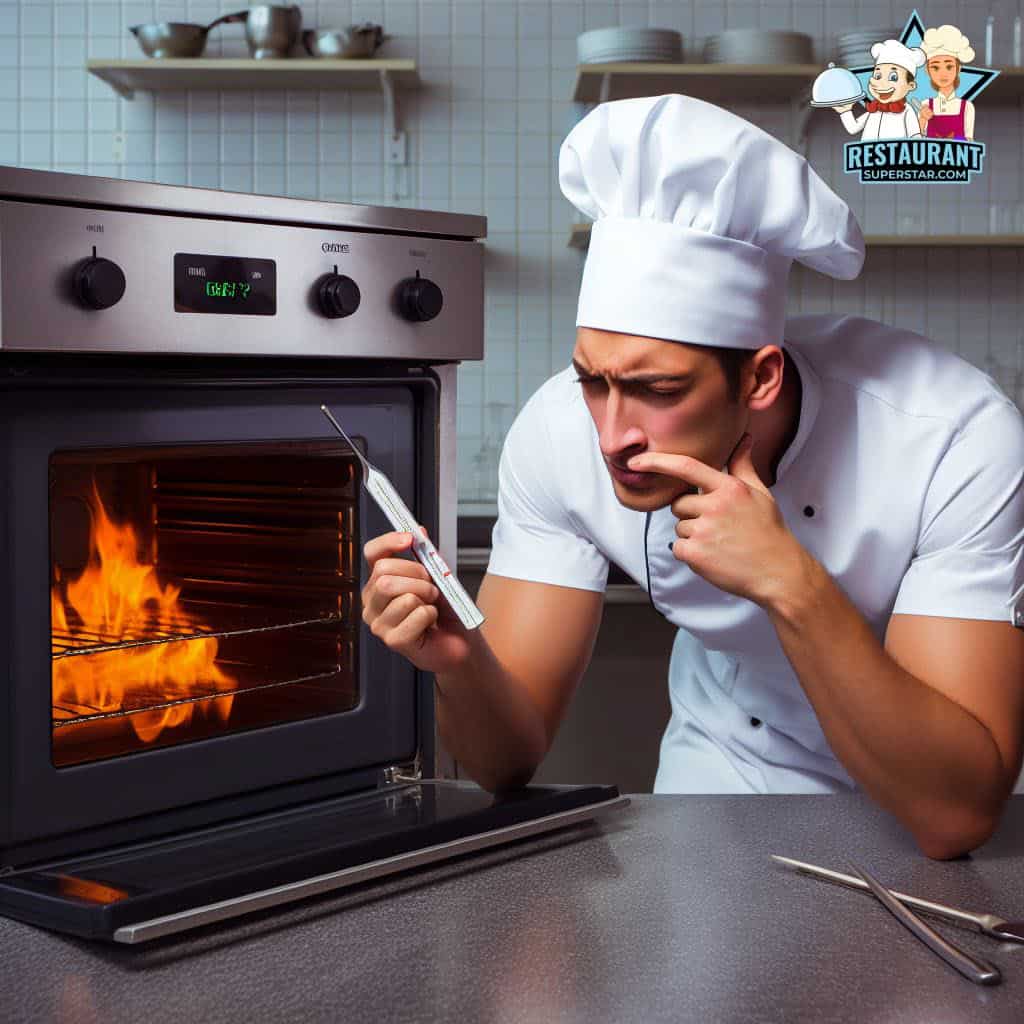
Let’s explore an often overlooked yet crucial aspect: monitoring and adjusting the temperature in your kitchen.
Through my experience working with numerous Florida restaurants, I’ve realized that the most successful kitchens diligently maintain precise temperature control.
3.1 The Need for Regular Monitoring: It’s More Than Just Numbers
- Thermometers: The Unsung Heroes: In the culinary world, we often sing praises of the chef’s knife or the cast iron skillet. But let me tell you about another equally vital tool: the humble thermometer. These little gadgets are game-changers. They give you an accurate temperature reading, ensuring that your food is safe and your kitchen environment is comfortable. From checking the internal temperature of a roast to ensuring your fridge is cool enough, thermometers are indispensable.
- Temperature Sensors: The Modern Touch: For those who love a bit of tech in their kitchen (count me in!), temperature sensors are the way to go. These devices, often connected to monitoring systems, provide real-time data on your kitchen’s temperature. They can alert you if things are getting too hot or cold, allowing you to adjust on the fly. It’s like having a guardian angel looking for your kitchen’s comfort and safety.
Regular monitoring is about more than just compliance or meeting standards. Ensuring that every dish that leaves your kitchen is a testament to your dedication to quality and safety.
It’s about providing your team with a comfortable environment to do their best work.
And honestly, it’s about peace of mind. Knowing that you’re on top of things and proactive can make all the difference.
So, whether you’re a seasoned chef, an up-and-coming kitchen manager, or a restaurant owner looking to up your game, remember: a well-monitored kitchen is a successful kitchen. Equip yourself with the right tools, stay vigilant, and you’re set for success.
3.2 When the Heat Turns Up: Staying Cool Under Pressure
The classic kitchen problem is wondering what to do when things get too toasty. We’ve all been there, haven’t we?
The lunch rush hits, every burner is aflame, orders are flying in, and before you know it, the kitchen feels like the inside of an oven.
Having sweated it out in many a Florida kitchen, I’ve got some tried-and-true tips for my fellow culinary comrades.
- Hydration Station: First and foremost, keep that water flowing. Staying hydrated is key. When the kitchen heats up, you’re not just sweating out water but losing essential salts and minerals. So, keep a water bottle handy, and don’t shy away from those electrolyte drinks. They can be absolute lifesavers, helping you stay alert and energetic.
- Break Time in Cool Spots: Taking a break might seem impossible in the thick of service. But trust me, even a quick 5-minute pause can do wonders. Find a cooler spot in the restaurant, at the back door, or near a fan. Step out, take a few deep breaths, and give yourself a moment. It’ll help you reset and return to the action with renewed vigor.
- Dress Smart: This one’s a game-changer. Ditch those thick, heavy chef jackets and opt for breathable, loose-fitting clothing. Lightweight fabrics that wick away sweat can be a godsend in a hot kitchen. And hey, if you can influence the kitchen dress code, consider introducing mesh-backed hats or vented chef coats. Your team will thank you.
Over the years, I’ve realized that dealing with a hot kitchen isn’t just about enduring the heat.
It’s about adapting, staying proactive, and ensuring that neither the food quality nor the team’s well-being is compromised.
To all my fellow kitchen warriors, remember: the heat might be relentless, but with the right strategies, so are we.
4. Tips for Maintaining a Comfortable Kitchen Temperature
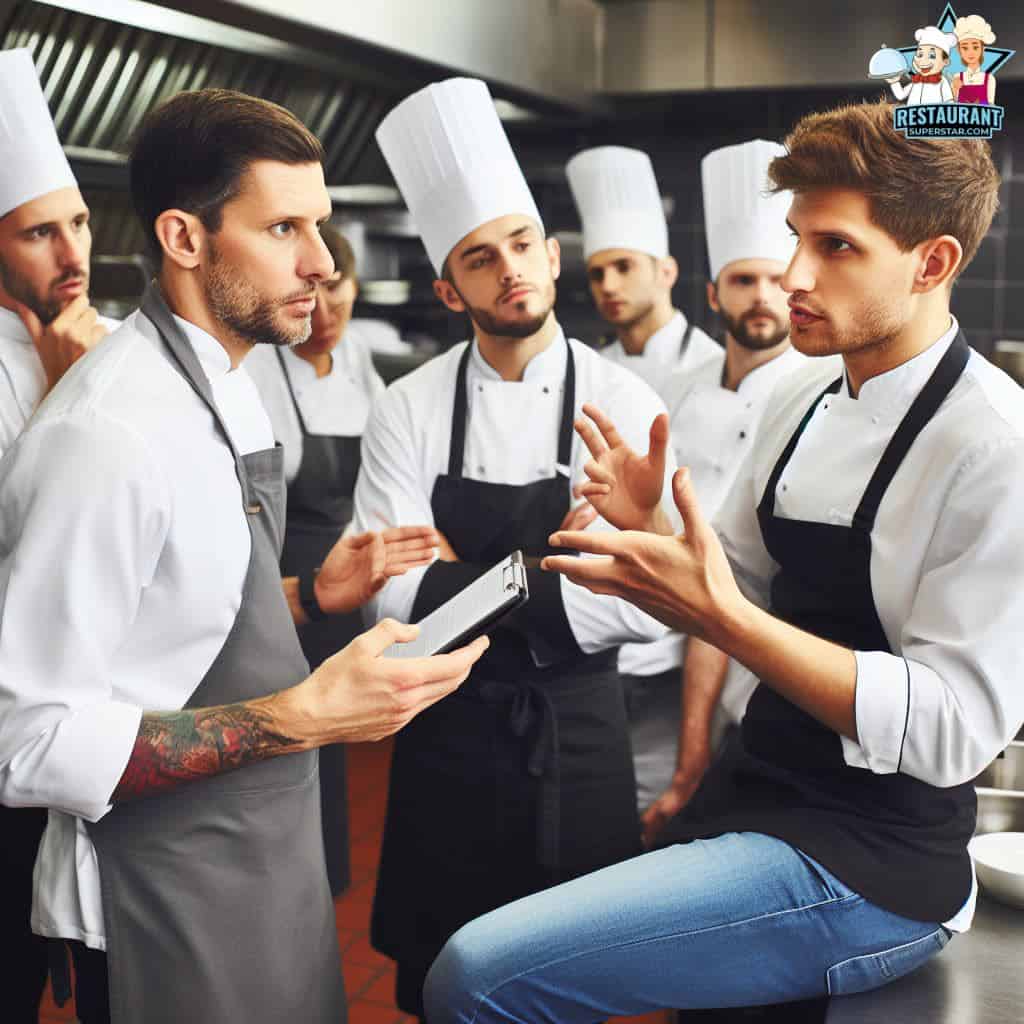
Now, let’s explore what I often call the “unsung heroes” of a pleasant kitchen ambiance.
Throughout my years in the Florida restaurant consulting industry, I’ve encountered kitchens that emulate a tropical paradise and others resembling a sauna’s oppressive heat. And what sets them apart? Ventilation plays a pivotal role.
4.1 Breathe Easy with Proper Ventilation: The Game Changer
- The Power of Exhaust Fans: Picture this: It’s mid-July in Tampa, the sun’s blazing, and your kitchen’s bustling. Without proper exhaust fans, all that heat from the stoves, grills, and ovens? It’s got nowhere to go. An efficient exhaust fan system doesn’t just pull out the hot air; it circulates fresh, cooler air into the kitchen, making it a more pleasant workplace.
- Hoods: More Than Just a Shiny Accessory: I’ve been in many kitchens where the hood system is nothing short of a masterpiece – gleaming stainless steel, powerful fans, and all. But beyond their aesthetic appeal, hoods play a crucial role. They suck up the cooking fumes, ensuring that the air remains clean and breathable. And trust me, when you’re grilling up a storm, those fumes can get intense. A sound hood system ensures the kitchen air is clear of smoke and smells, enhancing safety and comfort.
In all my years in this industry, I’ve often told restaurant owners that investing in proper ventilation is not just a matter of compliance or ticking off a box.
It’s about respect – for the food, craft, and, most importantly, for the people who work tirelessly to bring culinary visions to life.
A well-ventilated kitchen is a happier, more productive kitchen. And in the end, isn’t that what we all strive for?
4.2 Appliance Maintenance: Keeping Things Cool by Keeping Them Clean
Let’s delve into a topic often disregarded or even forgotten entirely: appliance maintenance.
Having stepped into numerous Florida kitchens, from lively restaurants in Orlando to charming cafes in Key Largo, I cannot emphasize enough the profound impact that the condition of your appliances has on the ambiance and temperature of your kitchen.
- The Heat of Neglect: Have you ever worked with an oven that’s seen better days or a grill that’s more char than metal? Not only do they affect the quality of your dishes, but they also run less efficiently. An oven with a faulty seal or a stove with accumulated grease doesn’t just cook food; it heats your entire kitchen. These neglected appliances tend to overheat, throwing off extra avoidable warmth.
- The Cool of Care: Conversely, a clean, well-maintained appliance is like a dream. It heats quickly, cooks evenly, and, most importantly, doesn’t radiate unnecessary heat into the kitchen. Regular maintenance – deep cleaning, checking seals, or even ensuring that the vents aren’t blocked – can make a difference. It keeps the appliances running smoothly, ensuring they give off minimal excess heat.
Over the years, I’ve noticed a trend. Kitchens that prioritize appliance maintenance aren’t just cooler; they’re happier.
There’s a sense of pride, a rhythm to how the team works. It’s like a well-tuned orchestra, where every instrument, or in this case, appliance, plays its part perfectly.
So, to all the dedicated folks in the restaurant biz, take it from a seasoned Floridian consultant: treat your appliances with the care they deserve.
Not only will they reward you with impeccable performance, but they’ll also play a pivotal role in keeping your kitchen comfortably cool.
4.3 Insulated Cookware
While we’ve covered the significance of ventilation and appliance maintenance, insulated cookware is another element that often goes unnoticed.
It quietly plays a crucial role in the world of cooking, substantially impacting the overall experience.
- The Science Behind the Magic: Now, for those scratching their heads, let’s break it down. Insulated pots and pans come with a core designed to trap heat. This means that the heat from your stove or burner is efficiently used to cook your food rather than radiating into the kitchen. Think of them as the cool shades you wear on a sunny day; they shield and protect, ensuring you stay calm even when things heat up.
- Less Heat, More Cooking: Here’s the thing. When you use regular pots and pans, a good chunk of the heat escapes into the air. But with insulated cookware, the heat is directed where it’s needed most: your food. The result? Faster cooking times, less energy use, and a significantly cooler kitchen environment.
- The Added Perks: Beyond just keeping the kitchen cool, insulated pots and pans offer a range of benefits. They ensure even cooking, preventing those pesky hotspots that can burn your food. They’re also energy efficient, meaning you’ll see a dip in those electricity bills. And let’s remember the safety aspect. With reduced heat transfer, the chances of accidental burns go down.
Over my years in the industry, I’ve often advised restaurant owners to see insulated cookware as an investment, not an expense.
They elevate the cooking experience and play a pivotal role in ensuring the kitchen remains a cool, comfortable workspace.
So, to all my fellow culinary enthusiasts, if you haven’t already, it’s time to embrace the magic of insulated cookware. Your team, your dishes, and yes, your kitchen temperature will thank you for it.
4.4 Timing is Everything: Smart Cooking in Sync with the Sun
Achieving a fantastic kitchen is not just about the tools and techniques but also about proper timing.
Success lies in balancing the factors contributing to a comfortable culinary environment. As they say, the right timing is crucial in achieving culinary perfection.
- The Midday Meltdown: Now, for those who’ve braved a Florida summer (and let’s be honest, who hasn’t?), you know that come midday, things can get, well, pretty darn hot. The sun’s blazing, the air’s thick, and if you’re firing up those ovens and grills in the kitchen, you’re in for a sweltering time. The cooking heat and the external temperature can turn your kitchen into a furnace.
- The Cooler Alternative: Here’s a nugget of wisdom I’ve shared with many a restaurant over the years: avoid heavy cooking during the hottest parts of the day if you can. Instead, use this time for prep work, cold dish preparations, or inventory management. When the sun mellows out a bit, that’s your cue to crank up the heat in the kitchen. This will keep the kitchen’s temperature more manageable and ensure your team isn’t wilting under the combined heat of the sun and the stoves.
- Flexibility and Adaptation: Now, I get it. Sometimes, the nature of the restaurant business means you’ve got to cook during peak hours. In such cases, it’s all about flexibility. Ensure your ventilation is top-notch, keep those fans running, and throw in some portable coolers. It’s about adapting and ensuring that your kitchen remains a sanctuary of cool even in the heat of the moment.
With my extensive experience advising restaurants throughout our sunny state, I’ve witnessed the remarkable impact that strategic timing can create.
It’s not merely about providing comfort; it’s about maximizing efficiency, ensuring safety, and guaranteeing that every dish delivered from your kitchen is flawlessly cooked, regardless of the external temperature.
Conclusion: The Symphony of Safety and Comfort in Our Kitchens
As we conclude this culinary exploration of temperatures, ventilation, and timing, let us pause and contemplate the essence of it all.
Beyond the mere thermometers, fans, and insulated pots, it is about crafting an environment where culinary enchantment occurs.
A space that is not only safe and cozy but also overflowing with boundless creativity.
Having been a part of this vibrant Florida restaurant scene for years, I’ve realized that a kitchen’s temperature isn’t just a number on a dial.
It’s a reflection of the care, the dedication, and the respect we have for our craft and each other.
A well-maintained temperature ensures that every dish is a testament to safety and quality. It ensures that every kitchen team member, from the head chef to the newest intern, can work in an environment where they can truly shine.
And here’s the thing: this isn’t a solo gig. It’s a duet between employers and kitchen staff.
While employers provide the tools, training, and environment, it’s up to the kitchen warriors to use them wisely, speak up when things get too hot or cold, and look out for each other.
So, whether you’re a restaurant owner in Tallahassee, a chef in Fort Lauderdale, or a kitchen manager in the heart of Miami, remember: our kitchens are where stories are told, memories are made, and culinary dreams come to life.
And ensuring they’re at the right temperature? Well, that’s just setting the stage for the magic to unfold.
Jeff Smith is a Restaurant Consultant with over 20 years of hospitality experience ranging from server to owner and general manager. He focuses on Restaurant POS technology as well as restaurant marketing. Check out our world-famous restaurant resources page for a comprehensive offering of hand-picked resources and tools to help your business. You can also check out some of our other restaurant business articles.

